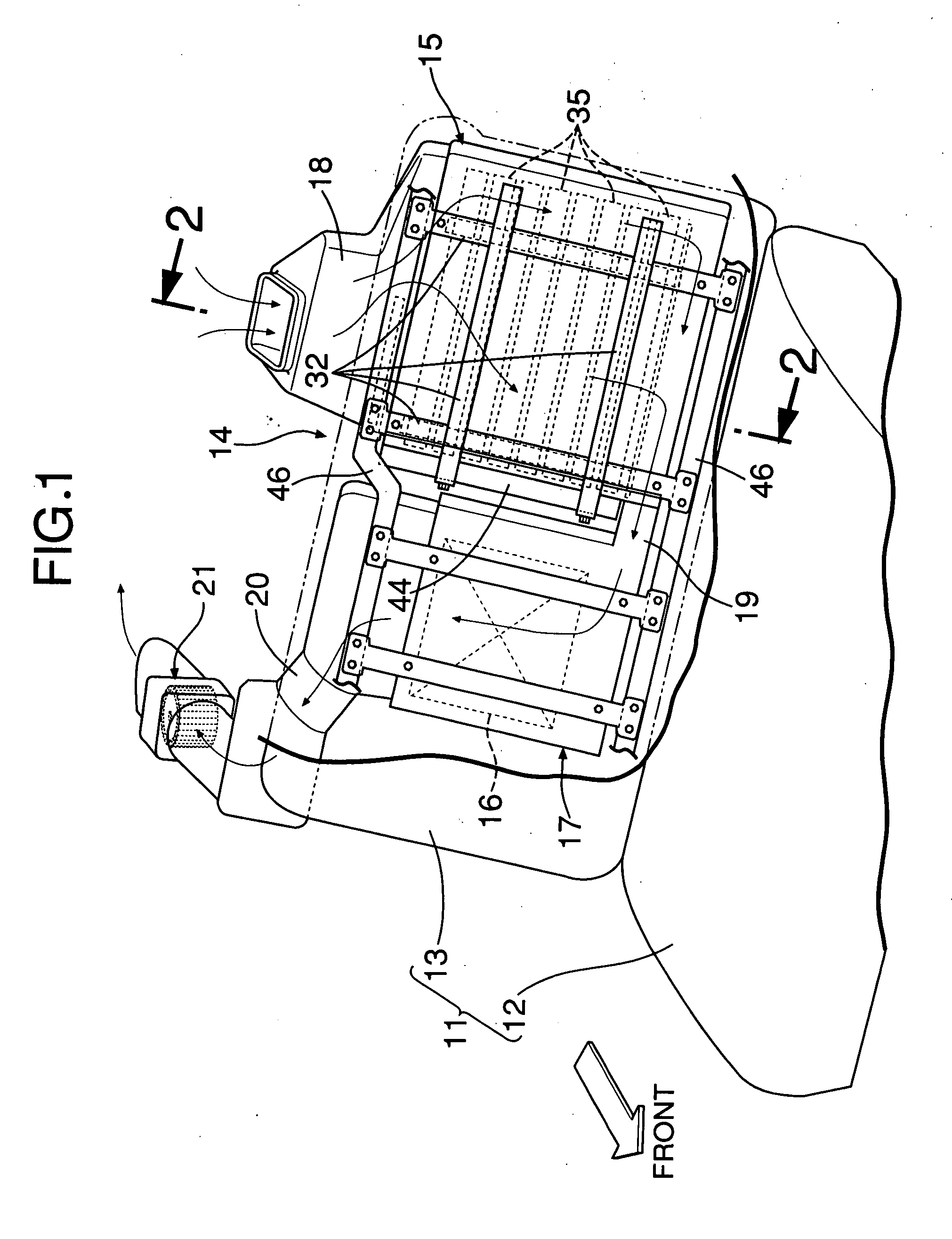Vehicular power source device
a power source device and battery technology, applied in the direction of battery/fuel cell propulsion, electrochemical generators, battery/fuel cell control arrangement, etc., can solve the problems of excessively high temperature shorten the life of the battery module, and reduce the performance of the entire plural battery module, so as to efficiently cool the cooled battery module. the effect of hard cooling
- Summary
- Abstract
- Description
- Claims
- Application Information
AI Technical Summary
Benefits of technology
Problems solved by technology
Method used
Image
Examples
first embodiment
[0036] the present invention will be described based on FIGS. 1 to 7.
[0037] As shown in FIG. 1, a power source device 14 is disposed on the rear face of a seat back 13, rising diagonally rearward from the rear end of a seat cushion 12 of a rear seat 11 in a hybrid vehicle having an engine and a motor generator, and is connected to THE motor generator, as a power source for driving. The power source device 14 comprises: a battery box 15 for storing a battery; an electric equipment box 17 for storing electric equipment 16, such as an inverter; a cooling-air supply duct 18 for introducing cooling air as a coolant to the battery box 15; an intermediate duct 19 for guiding the cooling air from the battery box 15 to the electric equipment box 17; a cooling-air discharge duct 20 for discharging the cooling air from the electric equipment box 17; and an electric fan 21 (a negative air pressure source) provided at the downstream end of the cooling-air discharge duct 20.
[0038] Next, the stru...
second embodiment
[0058] The power source device 14 in the second embodiment is stored in a recess 62a formed in a floor panel 62 of a trunk room 61 of an automobile. The recess 62a is a place generally used for storing a spare tire. Using this place for storing the power source device 14 enables an effective use of space.
[0059] The battery modules 35 are arranged vertically in three layers. The lower first layer comprises 9 battery modules 35, the central second layer comprises 10 battery modules 35, and the upper third layer comprises 11 battery modules 35.
[0060] The cooling-air supply duct 18 uniformly supplies the cooling air to the first to the third layers through the cooling-air supply port 49 formed in the battery case 41 of the battery box 15 and three pieces of the first air-introduction guides 48. The second air-introduction guide 51 is inclined diagonally upward on the downstream side of the cooling-air flow direction, and the bottom wall 41a of the battery case 41 is inclined so that th...
PUM
 Login to View More
Login to View More Abstract
Description
Claims
Application Information
 Login to View More
Login to View More - R&D
- Intellectual Property
- Life Sciences
- Materials
- Tech Scout
- Unparalleled Data Quality
- Higher Quality Content
- 60% Fewer Hallucinations
Browse by: Latest US Patents, China's latest patents, Technical Efficacy Thesaurus, Application Domain, Technology Topic, Popular Technical Reports.
© 2025 PatSnap. All rights reserved.Legal|Privacy policy|Modern Slavery Act Transparency Statement|Sitemap|About US| Contact US: help@patsnap.com



